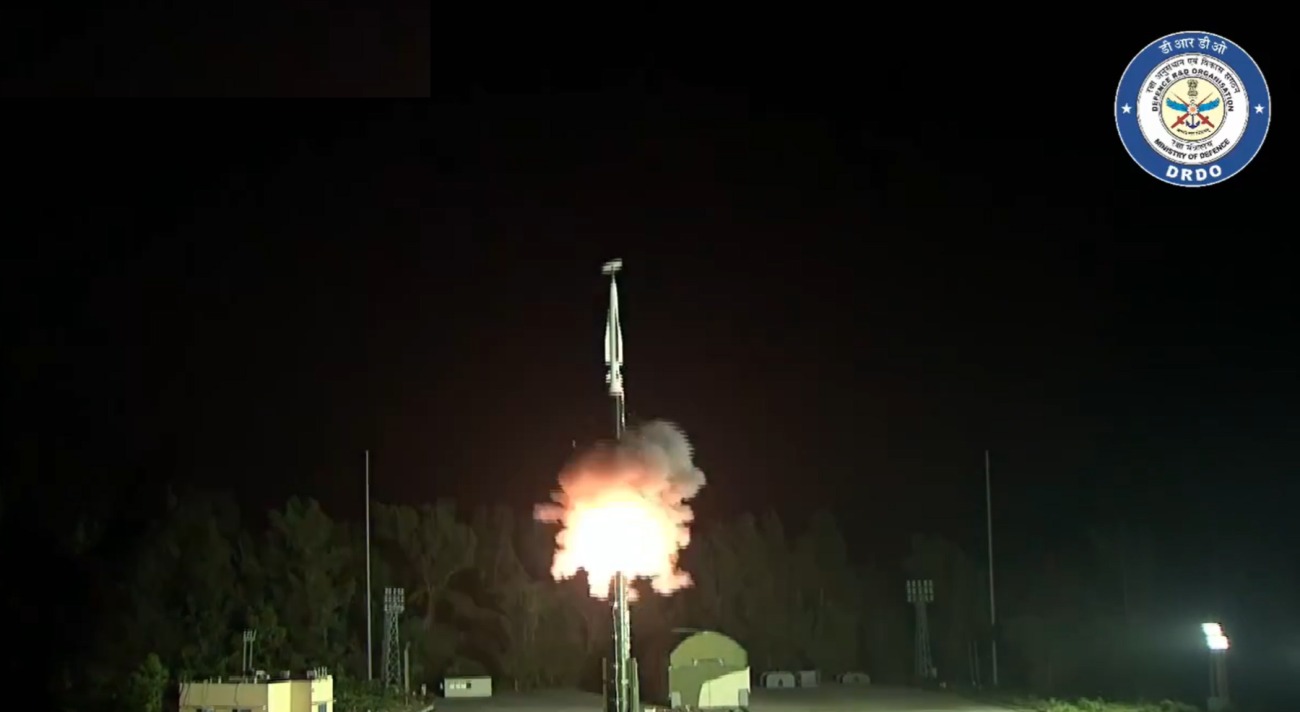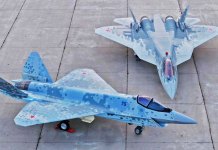India’s defense tapestry, woven with threads of indigenous innovation and a deep-rooted warrior spirit, has added another bold streak with the successful test of a hypersonic cruise missile.
This milestone does not just mark an engineering feat but solidifies India’s place in the exclusive club of hypersonic-capable nations.
Picture this: while ancient India’s arsenals boasted the formidable Brahmastra, today, we wield hypersonic cruise missiles—potent symbols of modern ‘Shastra’ that redefine battlefield dominance.
Let’s examine what makes this missile so deadly and why our adversaries should be stirring their chai with unease.
India, Japan To Develop ‘Stealth Antenna System’ For Indian Navy Warships; Ink Memorandum Of Intent
Decoding The Beast: Hypersonic Cruise Missile
Technical Precision Wrapped in Speed
Think of a hypersonic cruise missile as the cheetah of the skies, moving with ferocity beyond Mach 5—about five times the speed of sound. Powered by advanced propulsion systems like scramjets, these missiles soar low and fast, with the stealth of a Himalayan snow leopard and the maneuverability of an acrobat.
Unmatched Evasion
- Impossible to Predict: Unlike ballistic missiles that follow the predictable curve of a seasoned cricket bowler’s swing, hypersonic cruise missiles change direction faster than a cobra in defense mode. For existing air defense systems, that’s a nightmare.
- Low-Level Flight: They skim the earth at altitudes that radar beams struggle to detect, like a hawk gliding just above the tree line.
- Thermal Cloak: The heat generated at hypersonic speeds is immense—but there is no heat-seeking missile that’s fast enough to even shout ‘incoming!’
Why Current Defences Fail
Air defense systems are built to handle linear threats, whether it’s a slow-moving drone or a traditional ballistic missile arching across the sky. But hypersonic cruise missiles? They’re in a league of their own, like an F-22 outperforming a vintage biplane.
The missile’s ability to dodge, weave, and outpace defenses leaves current interception technology looking as outdated as an old Morse code machine in the digital age.
Strategic Implications: A Calculated Move in the Great Game
A Shield Against Neighbours With Swords Drawn
- Pakistan: The subcontinent’s rivalry, entrenched in history and geography, now faces a paradigm shift. India’s hypersonic prowess adds a formidable arrow to its quiver, negating Pakistan’s nuclear saber-rattling. With missiles that can strike critical assets, including their strategic centers, India now holds a game-changing deterrent.
- China: Let’s face it—our eastern neighbor’s “String of Pearls” strategy and aggressive posturing in Ladakh is no secret. With Beijing flexing its own hypersonic muscles, India’s successful test is the equivalent of drawing the line in the Himalayas and saying, “We can play this game too.”
Strategic Autonomy
India has always prided itself on strategic autonomy—a legacy born from its history of resisting imperial powers. The hypersonic cruise missile reinforces that independence. Unlike the dependency on imported equipment during the Kargil conflict, this home-grown marvel showcases India’s engineering capabilities, free from the strings of foreign control.
The Edge: From Tactical Prowess To Operational Dominance
Rapid Reaction and Decisive Outcomes
In any potential conflict, time and speed are of the essence. Imagine this: A hypersonic missile takes off from a covert launch site and reaches its target faster than you can brew a pot of chai. By the time an adversary’s command centers detect it, the missile would have already made an impact, silencing key military nodes and command hubs.
Multi-Target Capability
The hypersonic missile isn’t just a one-trick pony. It can be programmed to hit multiple targets with uncanny precision, a trait that comes in handy during complex, multi-theatre warfare scenarios. This ability to engage and neutralize high-value assets, whether on land or at sea, shifts the balance of power dramatically in India’s favor.
Operational Synergy with Existing Arsenal
Pairing hypersonic missiles with India’s existing fleet—such as the Mirage 2000s and Sukhoi Su-30 MKIs—enables coordinated strikes that overwhelm even the most layered defenses.
Like combining the subtlety of a Bharatanatyam dance with the raw power of a Kathakali warrior, the mix of technology and firepower spells trouble for any adversary.
Maritime Dominance: Turning The Tides In Indian Ocean
From Land to Sea: Hypersonic Control
India’s hypersonic capabilities don’t stop at the coastlines. Picture a missile system aboard a warship, patrolling the waters of the Indian Ocean, ready to react within seconds. The integration of hypersonic cruise missiles into the Navy’s arsenal ensures that no aircraft carrier or enemy vessel dares venture into India’s maritime backyard unchallenged.
Sea Denial and A2/AD Breakthroughs
Deploying these missiles on Indian warships transforms them into floating fortresses capable of enforcing sea denial. They slice through anti-access/area denial (A2/AD) strategies like a hot knife through butter. This turns the tables on adversaries who aim to dominate maritime lanes, ensuring India’s uninterrupted blue-water operations and free passage in vital sea routes.
Deterring Strategic Encroachments
China’s naval ambitions in the Indian Ocean Region (IOR) are well-documented, with its bases and patrols casting shadows over India’s influence. Hypersonic deployment ensures that the IOR, from the Strait of Malacca to the Gulf of Oman, remains under India’s vigilant watch. The message to any encroacher is clear: The Indian Navy, powered by hypersonic firepower, is a force to reckon with.

Overcoming Challenges & Embracing the Future
Mastering the Elements
Achieving operational mastery over hypersonic technology isn’t just a walk in Lodhi Gardens. It demands overcoming intense heat resistance, propulsion intricacies, and precision guidance challenges. But if there’s one thing that centuries of innovation from Vedic times to Chandrayaan have shown, it’s that India knows how to rise to a challenge.
Strategic Partnerships and Collaborations
While India is forging its path, strategic collaborations with allies who share democratic values can further accelerate developments. Joint exercises and technology-sharing agreements enhance not just our capabilities but also collective security, weaving a tapestry of shared deterrence.
Future Deployments & Comprehensive Defense
Moving forward, deploying hypersonic missiles across platforms—be it in silos, air-launch configurations, or aboard submarines—will solidify India’s defense posture. Integrating these into AI-driven, real-time C4ISR (Command, Control, Communications, Computers, Intelligence, Surveillance, and Reconnaissance) systems will ensure seamless coordination and optimal strike readiness.
Conclusion: The New Era Of Indian Deterrence
The successful test of a hypersonic cruise missile marks more than just a feather in India’s defense cap—it’s the whole peacock.
It embodies a new era where the Indian Armed Forces, inspired by a legacy of valor and underscored by cutting-edge technology, stand ready. With this advancement, India sends a message as clear as the sound of temple bells echoing at dawn: We’re prepared, we’re equipped, and we’re always a step ahead.
- Group Capt MJ Augustine Vinod VSM (R) is COO, AutoMicroUAS. The views expressed in the above piece are personal and solely those of the author. They do not necessarily reflect the EurAsian Times’ views.
- He tweets at @mjavinod




